Chapter: Mechanical : Advanced IC Engines : Alternate Fuels
Performance, combustion and emission characteristics of SI and CI engines
Performance, combustion and emission
characteristics of SI and CI engines
Testing
procedure
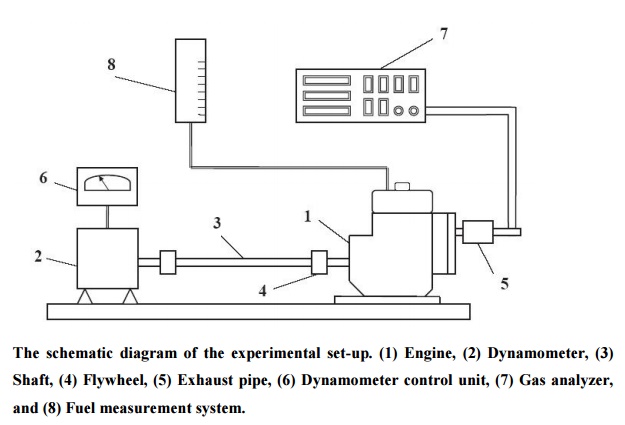
The schematic diagram of the experimental set-up.
(1) Engine, (2) Dynamometer, (3) Shaft, (4) Flywheel, (5) Exhaust pipe, (6)
Dynamometer control unit, (7) Gas analyzer, and (8) Fuel measurement system.
Experimental
results of engine performance characteristics using different ethanol gasoline
blended fuels under various engine speeds. (a) Brake power, (b) Brake torque,
and
(c) Brake
specific fuel consumption.
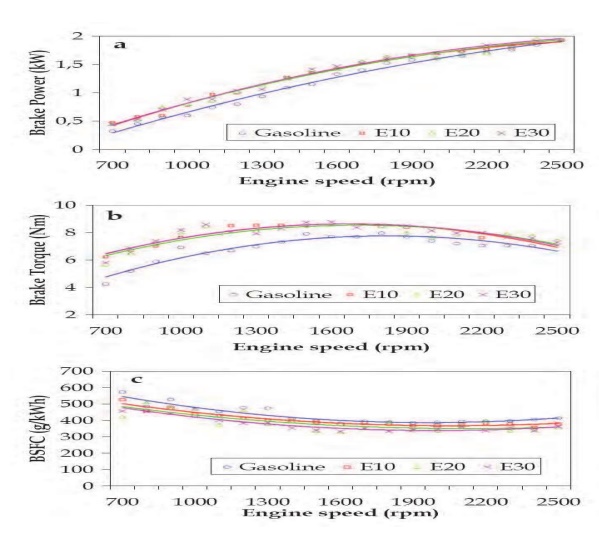
Experimental
results of engine performance characteristics using different methanol gasoline
blended fuels under various engine speeds. (a) Brake power, (b) Brake torque,
and (c) Brake specific fuel consumption.

The
influence of ethanol addition on the engine performance characteristics. (a)
Brake power,
(b) Brake
torque, and (c) Brake specific fuel consumption.

The
influence of methanol addition on the engine performance characteristics. (a)
Brake
power,
(b) Brake torque, and (c) Brake specific fuel consumption.
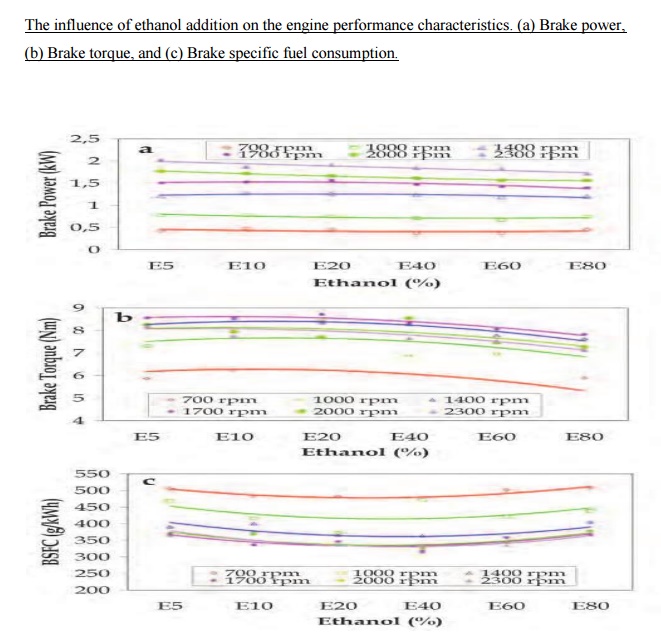
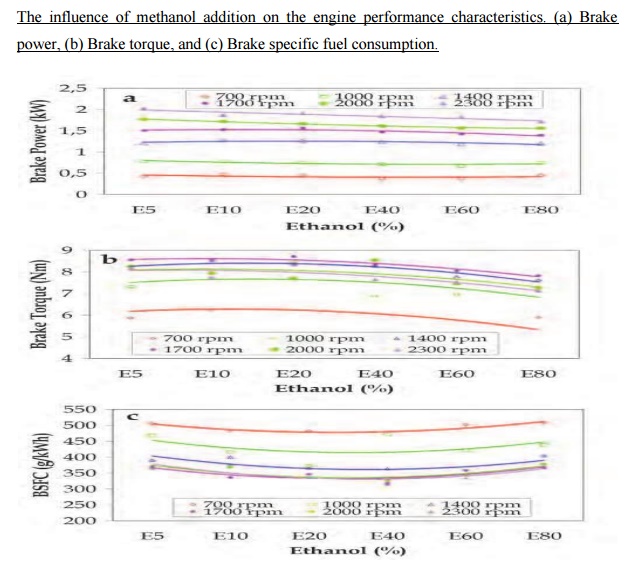
Comparison of brake power
characteristics using different ethanol and methanol gasoline blended fuels.
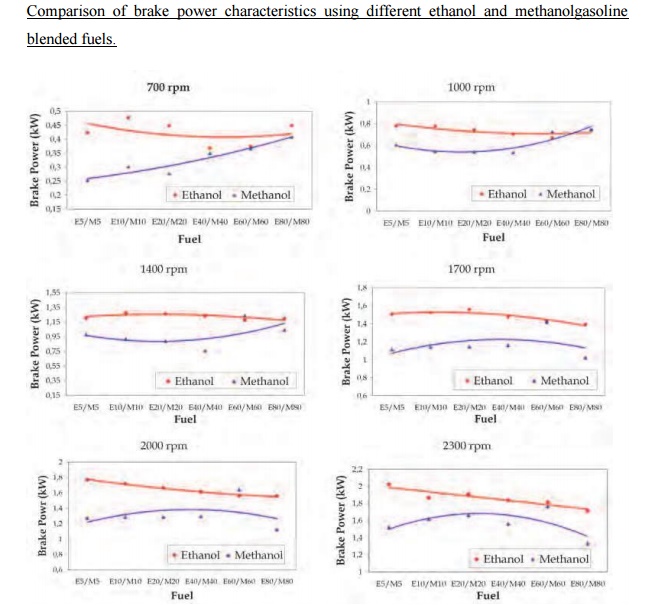
Comparison
of brake specific fuel consumption using different ethanol and methanol
gasoline blended fuels.
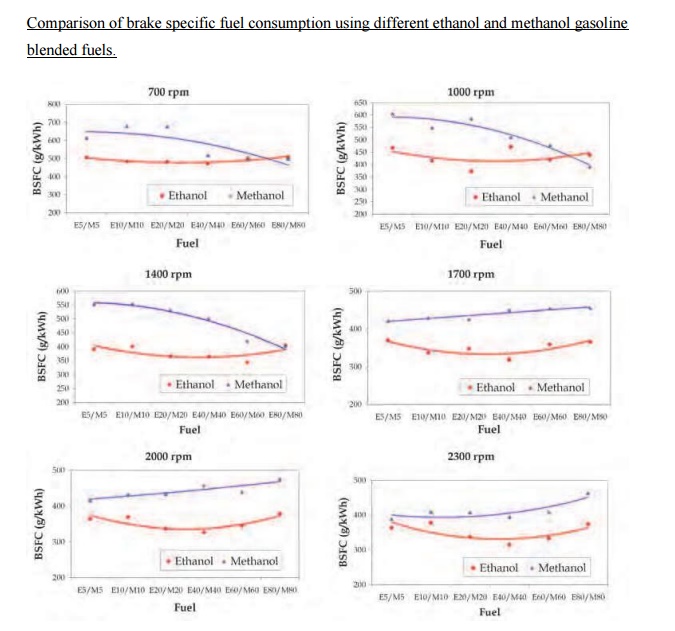
The
effect of various ethanol/methanol gasoline blend fuels on CO, CO2, HC and NOx
emissions.
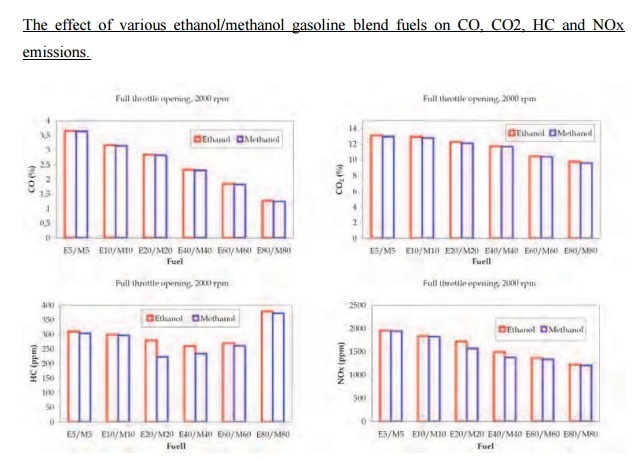
Sometime
during the 21st century, crude oil and petroleum products will become very
scarce and costly to find and produce. At the same time, there will likely be
an increase in the number of automobiles and other IC engines. Although fuel
economy of engines is greatly improved from the past and will probably continue
to beimproved, numbers alone dictate that there will be a great demand for fuel
in the coming decades. Gasoline will become scarce and costly. Alternate fuel
technology, availability, and use must and will become more common in the
coming decades. Although there have always been some IC engines fuelled with
non-gasoline or diesel oil fuels, their numbers have been relatively small.
Because of the high cost of petroleum products, some third-world countries have
for many years been using manufactured alcohol as their main vehicle fuel. Many
pumping stations on natural gas pipelines use the pipeline gas to fuel the
engines driving the pumps. This solves an otherwise complicated problem of
delivering fuel to the pumping stations, many of which are in very isolated
regions. Some large displacement engines have been manufactured especially for
pipeline work. These consist of a bank of engine cylinders and a bank of
compressor cylinders connected to the same crankshaft and contained in a single
engine block similar to a V-style engine.
Related Topics